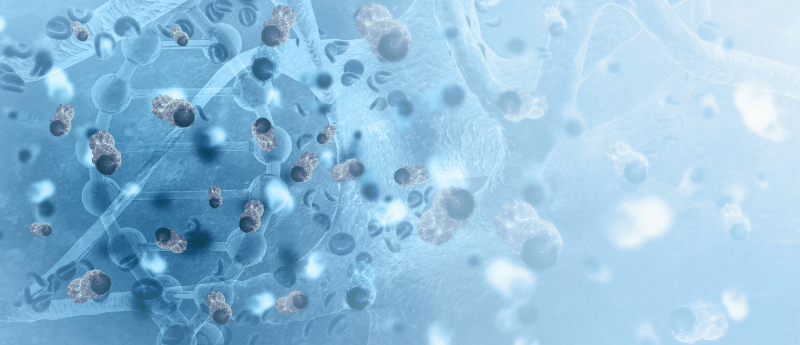Exploring the agenda: Organ Modelling & 3D Cell Culture 2024

With Organ Modelling & 3D Cell Culture 2024 (18-19 March; London, UK) fast approaching, we caught up with Oxford Global’s (Oxford, UK) Director of Editorial and Event Content, Eszter Sutowski Nagy, to learn more about the agenda and what we can anticipate.
Please introduce yourself and tell us a little about your role at Oxford Global
I’m Eszter and I am the Director of Editorial and Event Content at Oxford Global. Across our 7 brands, we bring together the industry’s most influential leaders and scientific experts, inspiring thought-provoking and insightful content that offers a unique perspective on research and development trends and challenges and provides a platform for curated content and communities within the life sciences sector. I conduct continuous research and development for our brands in the UK/EU region, shaping our content strategy and agendas based on the recommendations of our advisory and steering committee’s research.
How were the topics for the interactive discussions, roundtables and presentations at 3D Cell Culture & Organ Modelling 2024 curated?
The process of curating topics for the 3D Cell Culture & Organ Modelling 2024 event is thorough and multifaceted. In 2023 our team conducted onsite research, engaging in insightful discussions with speakers, attendees and sponsors to gain valuable insights into the current landscape. Subsequently, we held post-event advisory meetings to gather additional feedback and suggestions for new topics recommended by the community for this year’s event. Furthermore, during the program production stages, active engagement with our speakers who are presenting their work is integral to our agenda development process. These stages collectively play a crucial role in shaping our agenda.
Highlighting some specific sessions from our upcoming program, we’re proud to feature a panel discussion on ‘Overcoming difficulties of using 3D cell culture model technologies’ and ‘Validation of organ models’. These sessions delve into crucial topics such as the availability of big data and personalized medicine, all in line with the current interests of the community as identified through our research and agenda development approach outlined earlier. Through this dynamic process, we guarantee that our event content stays relevant, cutting-edge and consistently provides value and quality to all participants.
Besides the main sessions, what are some additional features or experiences that attendees can look forward to during the conference?
The conference promises a multifaceted experience beyond its main sessions, featuring engaging panel discussions led by industry experts and roundtable sessions for collaborative exploration, such as the ‘Developments in patient-derived organoid biobanking’. The event also celebrates the accomplishments of early-career scientists through the Young Scientist Awards, highlighting their contributions and fostering inspiration. Attendees can delve into cutting-edge research through poster presentation sessions, explore the latest advancements in the exhibition area and connect with peers and sponsors. With a commitment to diversity and enrichment, the conference offers a comprehensive and dynamic platform for learning, collaboration and celebration within the scientific community.
Networking is a crucial aspect of the conference. Could you elaborate on the various networking opportunities, such as speed networking sessions and how they work?
In addition to the main sessions, event attendees can look forward to a variety of enriching experiences. During refreshment breaks, participants will have the chance to engage in valuable networking, fostering connections with industry peers. These networking sessions are central to the conference, greatly enhancing the overall onsite experience.
To strengthen collaborations among pharmaceutical companies, academic institutions and solution providers, we will facilitate personalized one-on-one meetings with our sponsors. This opportunity will enable attendees to discuss specific research needs or explore suitable technologies to address their key challenges.
Last, but not least, as a testament to our commitment to fostering a vibrant community, we will be holding networking drinks at the end of day one. This relaxed setting provides a conducive environment for informal discussions, idea exchange and the establishment of meaningful professional relationships. Our goal is to ensure that attendees not only gain insights from the formal sessions but also have ample opportunities to connect, shake hands and forge partnerships that contribute to their overall conference experience.
Is there a specific session you are most looking forward to?
There are many great talks and discussion sessions scheduled on the agenda for this year but I am particularly looking forward to the workshop on ‘Creating advanced models using 3D bioprinting’ featuring speakers from MSD (NJ, USA) and Mestag Therapeutics (Cambridge, UK). 3D bioprinting is a highly debated area currently, as it is predicted to open new frontiers in creating intricate biological structures, including tissues and organs. This innovation holds promise for producing personalized, functional organs for transplantation, addressing critical shortages and improving patient outcomes.
What is the main message you would like attendees to take away from the conference?
The primary message I would like our attendees to take away from this conference is the empowerment to drive transformative changes in their work within 3D cell culture and organ modeling. By providing a platform for the exchange of cutting-edge knowledge, fostering valuable connections and showcasing innovative technologies and strategies, Oxford Global wants participants to leave with a renewed sense of inspiration, equipped with actionable insights and practical solutions to their research challenges. Our goal is for attendees to feel not only informed about the latest advancements but also motivated and empowered to apply these insights in their work, ultimately contributing to the advancements of the field and the broader scientific community.
The opinions expressed in this interview are those of the author and do not necessarily reflect the views of RegMedNet or Taylor & Francis Group.